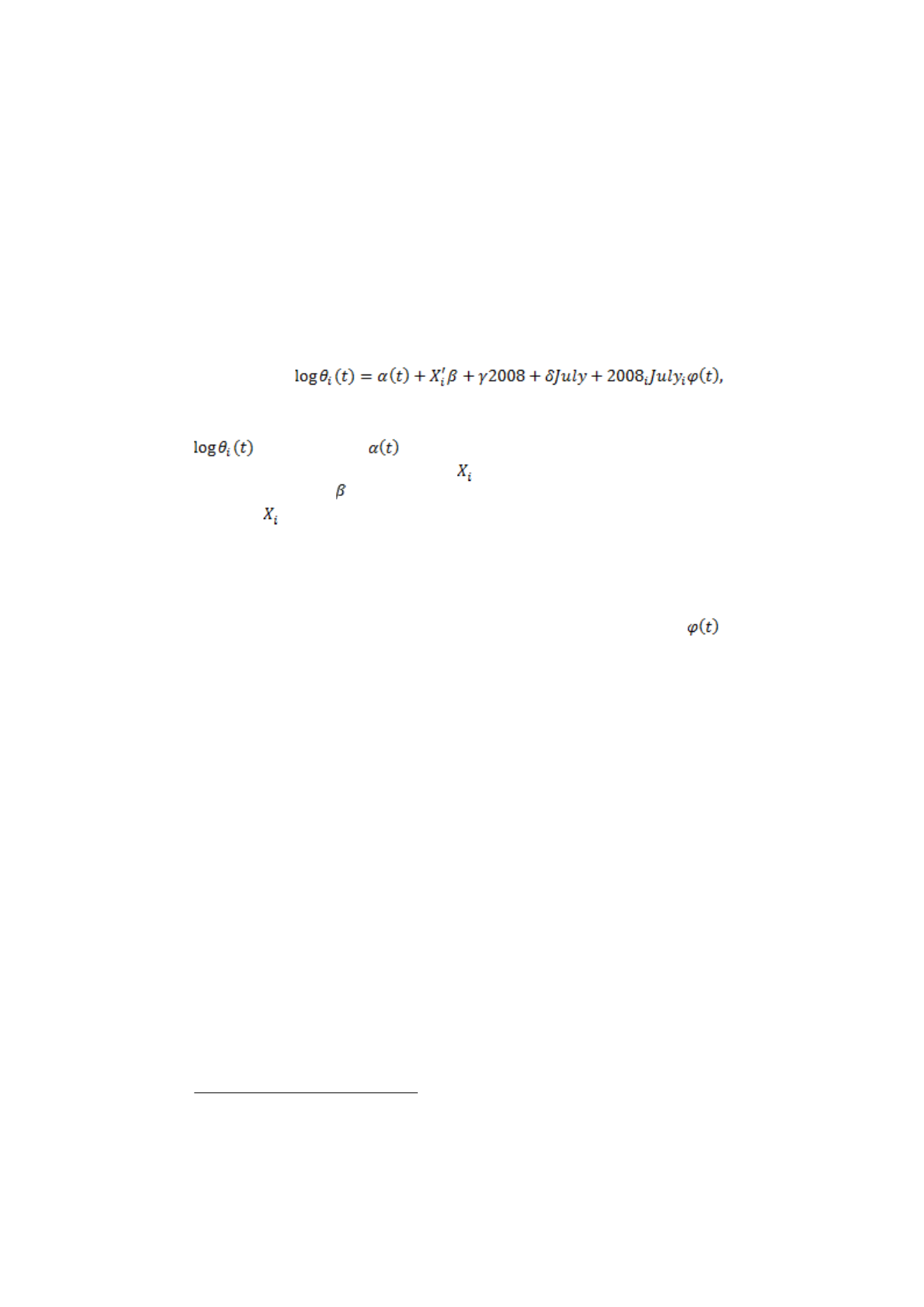
13(23)
5
Analysis
5.1
Empirical strategy
To analyse the time-restricted eligibility checks within the rehabilitation
chain, I use a Cox proportional hazard model. Such a model estimates
individual
i
:s probability of ending the sick spell at time
t
, given that it is
still in progress at
t-1
, according to:
is a function of
, capturing the general exit from sickness
absence during the follow-up period. is a vector of individual
characteristics, and is the coefficient vector reproducing the correlation
between and the exit probability at different durations. ”2008” and
”July” are dummy variables of the sick-spell starting year (1=2008,
0=2007) and month (1=July, 0=June). The impact of the rehabilitation
chain is identified through the interaction of initiating the spell in July of
2008. Since the effect is expected to vary with the sick-spell length, and be
especially visible at 91 and 181 days, the impact is studied in 4-week
intervals. The time-dependent impacts are captured in the coefficient
.
The estimations apply Breslow’s approximation
5.2
Effects on return to work
The generated estimates
are approximately identical to those generated using more exact estimation
methods.
Table 3 reports the effects of the rehabilitation chain on sick spells up to 28
weeks. The sick-spell length is defined as the number of days between the
beginning and the end of the sick spell. No difference is made between
part-time and full-time sick spells. Transition to part-time sickness absence
is enough to terminate the spell.
A test allowing only full terminations of
the sick spell reports results very similar to those presented in this paper
A positive significant effect on the exit rate is found in the 5-8 week
interval. The result is somewhat unexpected since it appears 1-2 months
before the working ability assessment at 91 days. The effect coincides with
the handover between the national and the local administrational level
Values over “1” indicate the percentage increase in the exit rate, and
values below “1” indicate the opposite. The first column gives the
estimation results of the simple model without covariates; the second
column results adjust for differences in observables. Only small differences
appear when comparing the results, which strengthen the casual
interpretation of the estimations.
3
Allison (1995).
4
A person could be absent due to sickness for 100, 75, 50 or 25%. Transitions from
100 to 50% sickness absence will terminate the sick spell, as well as a transition
from 50 to 25%.
5
See Hägglund (2010).


